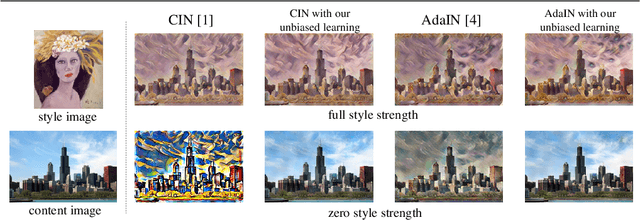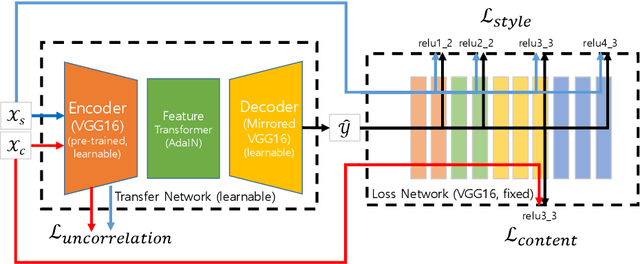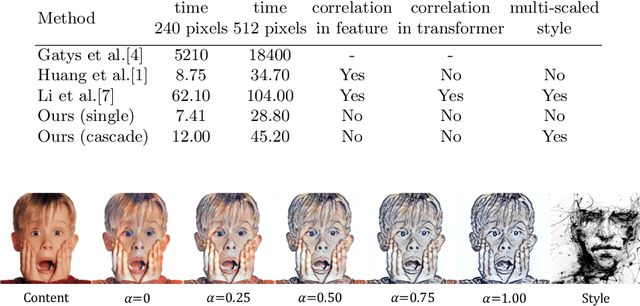Minseong Kim
DC4GS: Directional Consistency-Driven Adaptive Density Control for 3D Gaussian Splatting
Oct 30, 2025Abstract:We present a Directional Consistency (DC)-driven Adaptive Density Control (ADC) for 3D Gaussian Splatting (DC4GS). Whereas the conventional ADC bases its primitive splitting on the magnitudes of positional gradients, we further incorporate the DC of the gradients into ADC, and realize it through the angular coherence of the gradients. Our DC better captures local structural complexities in ADC, avoiding redundant splitting. When splitting is required, we again utilize the DC to define optimal split positions so that sub-primitives best align with the local structures than the conventional random placement. As a consequence, our DC4GS greatly reduces the number of primitives (up to 30% in our experiments) than the existing ADC, and also enhances reconstruction fidelity greatly.
ContrastCAD: Contrastive Learning-based Representation Learning for Computer-Aided Design Models
Apr 02, 2024



Abstract:The success of Transformer-based models has encouraged many researchers to learn CAD models using sequence-based approaches. However, learning CAD models is still a challenge, because they can be represented as complex shapes with long construction sequences. Furthermore, the same CAD model can be expressed using different CAD construction sequences. We propose a novel contrastive learning-based approach, named ContrastCAD, that effectively captures semantic information within the construction sequences of the CAD model. ContrastCAD generates augmented views using dropout techniques without altering the shape of the CAD model. We also propose a new CAD data augmentation method, called a Random Replace and Extrude (RRE) method, to enhance the learning performance of the model when training an imbalanced training CAD dataset. Experimental results show that the proposed RRE augmentation method significantly enhances the learning performance of Transformer-based autoencoders, even for complex CAD models having very long construction sequences. The proposed ContrastCAD model is shown to be robust to permutation changes of construction sequences and performs better representation learning by generating representation spaces where similar CAD models are more closely clustered. Our codes are available at https://github.com/cm8908/ContrastCAD.
Unbiased Image Style Transfer
Jul 05, 2018



Abstract:Recent fast image style transferring methods use feed-forward neural networks to generate an output image of desired style strength from the input pair of a content and a target style image. In the existing methods, the image of intermediate style between the content and the target style is obtained by decoding a linearly interpolated feature in encoded feature space. However, there has been no work on analyzing the effectiveness of this kind of style strength interpolation so far. In this paper, we tackle the missing work on the in-depth analysis of style interpolation and propose a method that is more effective in controlling style strength. We interpret the training task of a style transfer network as a regression learning between the control parameter and output style strength. In this understanding, the existing methods are biased due to the fact that training is performed with one-sided data of full style strength (alpha = 1.0). Thus, this biased learning does not guarantee the generation of a desired intermediate style corresponding to the style control parameter between 0.0 and 1.0. To solve this problem of the biased network, we propose an unbiased learning technique which uses unbiased training data and corresponding unbiased loss for alpha = 0.0 to make the feed-forward networks to generate a zero-style image, i.e., content image when alpha = 0.0. Our experimental results verified that our unbiased learning method achieved the reconstruction of a content image with zero style strength, better regression specification between style control parameter and output style, and more stable style transfer that is insensitive to the weight of style loss without additive complexity in image generating process.
Uncorrelated Feature Encoding for Faster Image Style Transfer
Jul 04, 2018



Abstract:Recent fast style transfer methods use a pre-trained convolutional neural network as a feature encoder and a perceptual loss network. Although the pre-trained network is used to generate responses of receptive fields effective for representing style and content of image, it is not optimized for image style transfer but rather for image classification. Furthermore, it also requires a time-consuming and correlation-considering feature alignment process for image style transfer because of its inter-channel correlation. In this paper, we propose an end-to-end learning method which optimizes an encoder/decoder network for the purpose of style transfer as well as relieves the feature alignment complexity from considering inter-channel correlation. We used uncorrelation loss, i.e., the total correlation coefficient between the responses of different encoder channels, with style and content losses for training style transfer network. This makes the encoder network to be trained to generate inter-channel uncorrelated features and to be optimized for the task of image style transfer which maintained the quality of image style only with a light-weighted and correlation-unaware feature alignment process. Moreover, our method drastically reduced redundant channels of the encoded feature and this resulted in the efficient size of structure of network and faster forward processing speed. Our method can also be applied to cascade network scheme for multiple scaled style transferring and allows user-control of style strength by using a content-style trade-off parameter.
 Add to Chrome
Add to Chrome Add to Firefox
Add to Firefox Add to Edge
Add to Edge